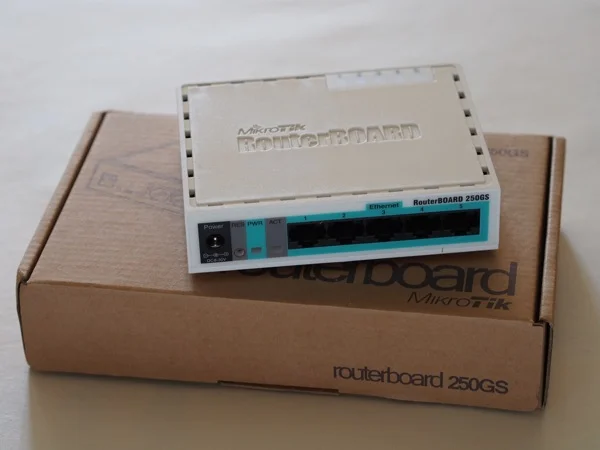The only other way to configure the router is using a RouterOS protocol builtin to WinBox and RouterOS that uses ethernet broadcasts to locate local devices. The idea is to use the L2 protocol to configure an IP address, then switch up to L3 for the rest of the configuration.
To me, that all seems kind of a pain compared to just starting with a blank router and a serial console - especially working in a lab environment where you're constantly resetting all of your devices back to a blank starting point. Of course, the hardware I bought was crazy cheap and I can always pony up more cash for the higher end hardware if it's such a big deal. For most people, most of the time, I don't think it'll matter in the slightest.
Once I had an admin interface on the router, the next annoyance was removing the default configuration. The router was setup to use most of the ports as switch ports and NAT to an internet connection on ethernet1. Really not what I wanted.
system reset-configuration no-defaults was the command I wanted, and going forward this will be the first & last step in the labs I write. With the routers I bought, using WinBox and the ethernet broadcast method for initial configuration looks like the easiest way to get started.
On a related side note, I'm curious about the L2 protocol in use. I'll be firing up Wireshark to see that in action over the wire. Expect more posts on that if it turns up anything interesting.
Once all the existing configuration was gone, putting IP addresses on interfaces was pretty straightforward.
The final hurdle to free flowing pings (not counting the default Windows 8 firewalls I'd forgotten about) was the port I'd plugged my second host into wouldn't come up. The log on the router showed it was flapping about 20 times before giving up and staying down. Some googling found plenty of other people reporting similar problems on the MikroTik forums. On a hunch I swapped out the almost brand new Cat5e cable with a minty fresh out of the pack Cat6 cable I'd just bought. Happy days, the port came up straight away. The weird part is that I had an identical Cat5e cable plugged into the port I was using on the host I was configuring the router with and that was working fine!
It's early days yet, but I think the MikroTik kit will provide for some very interesting setups to experiment with.




